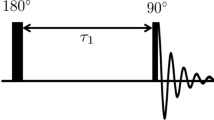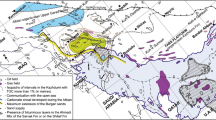Abstract
To compare the differences between new CF drilling sealing materials and ordinary cement, the author considered to conduct experimental research from the aspects of permeability, pore size and fluidity. Based on experiments conducted on samples simulating coal in an underground coal mine, the permeability around sealed boreholes was studied using scanning electron microscopy and low field nuclear magnetic resonance. In addition, the pores in the two kinds of grout used were studied quantitatively by mercury injection porosimetry and carbon dioxide gas adsorption. The experimental results show that the new CF seal slurry has better fluidity, average pore size, porosity and permeability than ordinary cement. This indicates that the new CF drilling sealing material has better grouting performance than ordinary cement due to its microscopic pore structure. This experimental study provides a better choice of sealing material for coal seam gas extraction drilling, which can improve the sealing quality of the sealing hole, improve the extraction efficiency, avoid the emission of toxic and harmful gas, and provide guarantee for the safety production of coal mine.











Similar content being viewed by others
References
Daigle H, Johnson A (2016) Combining mercury intrusion and nuclear magnetic resonance measurements using percolation theory. Transp Porous Med 111(3):669–679
Erol S, Francois B (2014) Efficiency of various grouting materials for borehole heat exchangers. Appl Therm Eng 70(1):788–799
Faure PF, Rodts S (2008) Proton NMR relaxation as a probe for setting cement pastes. Magn Reson Imaging 26(8):1183–1196
Feyzullahoğlu E (2014) Abrasive wear, thermal and viscoelastic behaviors of rubber seal materials used in different working conditions. Proc Inst Mech Eng Part J J Eng Tribol 229(1):64–73
Fujimoto K et al (2007) Borehole water and hydrologic Nojima fault, SW model around the Japan. Tectonophysics 443(3–4):174–182
Ge Z, Mei X, Lu Y, Tang J, Xia B (2015) Optimization and application of sealing material and sealing length for hydraulic fracturing borehole in underground coal mines. Arab J Geosci 8(6):3477–3490
Giannoukos K, Hall MR, Rochelle CA, Milodowski AE, Rigby SP (2014) Preliminary investigation on the chemical response of cementitious grouts used for borehole sealing of geologically stored CO2. Energy Procedia 59:174–181
Guo R, Dixon D (2006) Thermohydromechanical simulations of the natural cooling stage of the tunnel sealing experiment. Eng Geol 85(3–4):313–331
Hao Z, Lin B, Gao Y, Cheng Y (2012) Establishment and application of drilling sealing model in the spherical grouting mode based on the loosing-circle theory. Int J Min Sci Technol 22(6):895–898
Hao C, Cheng Y, Dong J, Liu H, Jiang Z, Tu Q (2018) Effect of silica sol on the sealing mechanism of a coalbed methane reservoir: new insights into enhancing the methane concentration and utilization rate. J Nat Gas Sci Eng 56:51–61
Javadpour F, McClure M, Naraghi ME (2015) Slip-corrected liquid permeability and its effect on hydraulic fracturing and fluid loss in shale. Fuel 160:549–559
Kim C, Dixon D (2013) Evaluating hydro-mechanical interactions of adjacent clay-based sealing materials. Phys Chem Earth 65:98–110
Koenders EAB, Hansen W, Ukrainczyk N, Filho T, R.D., 2014. Modeling pore continuity and durability of cementitious sealing material. J Energ Resour-Asme. 136(0429044SI)
Kurlenya MV, Serdyukov SV, Shilova TV, Patutin AV (2014a) Procedure and equipment for sealing coal bed methane drainage holes by barrier shielding. J Min Sci 50(5):994–1000
Kurlenya MV, Shilova TV, Serdyukov SV, Patutin AV (2014b) Sealing of coal bed methane drainage holes by barrier screening method. J Min Sci 50(4):814–818
Li Z, Liu D, Cai Y, Yao Y, Wang H (2015) Pore structure and compressibility of coal matrix with elevated temperatures by mercury intrusion porosimetry. Energy Explor Exploit
Li B, Zhang J, Wei J, Qiang Z (2018) Preparation and sealing performance of a new coal dust polymer composite sealing material. Adv Mater Sci Eng
Liu Q et al (2014) A new effective method and new materials for high sealing performance of cross-measure CMM drainage boreholes. J Nat Gas Sci Eng 21:805–813
Molinda G (2008) Reinforcing coal mine roof with polyurethane injection: 4 case studies. Geotech Geol Eng 26(5):553–566
Paillet F (2004) Borehole flowmeter applications in irregular and large-diameter boreholes. J Appl Geophys 55(1–2):39–59
Pusch R (2011) A technique to delay hydration and maturation of borehole seals of expansive clay. Eng Geol 121(1–2):1–6
Qin L et al (2016) Failure mechanism of coal after cryogenic freezing with cyclic liquid nitrogen and its influences on coal bed methane exploitation. Energ Fuel 30(10):8567–8578
Qin L et al (2017) Changes in the petrophysical properties of coal subjected to liquid nitrogen freeze-thaw—a nuclear magnetic resonance investigation. Fuel 194:102–114
Qin L et al (2018a) Fractal dimensions of low rank coal subjected to liquid nitrogen freeze-thaw based on nuclear magnetic resonance applied for coalbed methane recovery. Powder Technol 325:11–20
Qin L, Zhai C, Liu S, Xu J (2018b) Mechanical behavior and fracture spatial propagation of coal injected with liquid nitrogen under triaxial stress applied for coalbed methane recovery. Eng Geol 233:1–10
Stroes-Gascoyne S (2010) Microbial occurrence in bentonite-based buffer, backfill and sealing materials from large-scale experiments at AECL’s Underground Research Laboratory. Appl Clay Sci 47(1–2):36–42
Wang Z, Sun Y (2018) Swelling pressure of double-expansive material and its active support effect for coal seam gas drainage borehole. Adv Mater Sci Eng
Wang H et al (2016) Fault-sealing capability and its impact on coalbed methane distribution in the Zhengzhuang field, southern Qinshui Basin, North China. J Nat Gas Sci Eng 28:613–625
Xia T, Zhou F, Liu J, Kang J, Gao F (2014) A fully coupled hydro-thermo-mechanical model for the spontaneous combustion of underground coal seams. Fuel 125:106–115
Xiang X, Zhai C, Xu Y, Yu X, Xu J (2015) A flexible gel sealing material and a novel active sealing method for coal-bed methane drainage boreholes. J Nat Gas Sci Eng 26:1187–1199
Yao Y et al (2010) Petrophysical characterization of coals by low-field nuclear magnetic resonance (NMR). Fuel 89(7):1371–1380
Zhai C, Hao Z, Lin B (2011) Research on a new composite sealing material of gas drainage borehole and its sealing performance. Proc Eng 26:1406–1416
Zhai C, Xu J, Xiang X, Zhong C (2015) Flexible gel (FG) for gas-drainage drilling sealing material based on orthogonal design. Int J Min Sci Technol
Zhai C, Xiang X, Xu J, Wu S (2016a) The characteristics and main influencing factors affecting coal and gas outbursts in Chinese Pingdingshan mining region. Nat Hazards 82(1):507–530
Zhai C, Xiang X, Zou Q, Yu X, Xu Y (2016b) Influence factors analysis of a flexible gel sealing material for coal-bed methane drainage boreholes. Environ Earth Sci. 75(5)
Zhang S, Tang S, Li Z, Pan Z, Shi W (2016) Study of hydrochemical characteristics of CBM co-produced water of the Shizhuangnan Block in the southern Qinshui Basin, China, on its implication of CBM development. Int J Coal Geol 159:169–182
Zou M et al (2013) Classifying coal pores and estimating reservoir parameters by nuclear magnetic resonance and mercury intrusion porosimetry. Energ Fuel 27(7):3699–3708
Zou Q et al (2015) Novel integrated techniques of drilling–slotting–separation-sealing for enhanced coal bed methane recovery in underground coal mines. J Nat Gas Sci Eng 26:960–973
Acknowledgements
This work was financially supported by National Natural Science Foundation of China (Grant No. 51504189), the Xi’an University of Science and Technology Excellent Youth Science and Technology Fund Project (2019YQ3-02). We thank David Frishman, PhD, from Liwen Bianji, Edanz Group, for editing the English text of a draft of this manuscript.
Author information
Authors and Affiliations
Corresponding author
Additional information
Publisher’s Note
Springer Nature remains neutral with regard to jurisdictional claims in published maps and institutional affiliations.
Rights and permissions
About this article
Cite this article
Chao, Z., Jie, C., Shugang, L. et al. Experimental study comparing the microscopic properties of a new borehole sealing material with ordinary cement grout. Environ Earth Sci 78, 149 (2019). https://doi.org/10.1007/s12665-019-8165-8
Received:
Accepted:
Published:
DOI: https://doi.org/10.1007/s12665-019-8165-8




